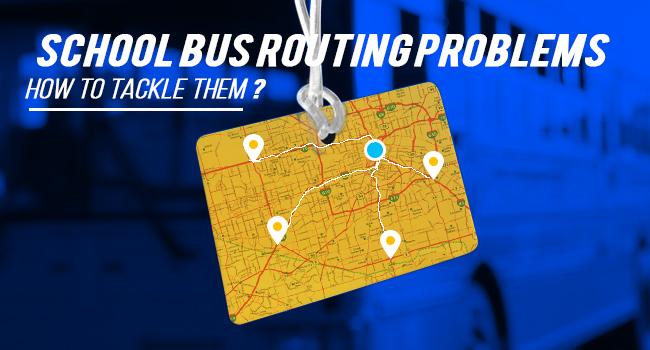The school transportation system caters to the safe transportation of students in buses to and back from school.
Though the operation of the vehicle fleet seems simple, it is complicated and requires immense efforts of the school authorities to run it smoothly. Routing of the school bus is a major factor in maintaining operational efficiency.
School buses have to be routed in an effective manner so that the students are picked up and dropped off on their respective stops.
Challenges
School bus routing is a challenge which is faced by the school administration. On one hand, the students have to be transported in minimal travel time; on the other hand, school authorities have to ensure maximum utilization of the bus, keeping the expenses to a minimum.
Schools schedule bus routes taking into consideration the number of students at different bus stops, the number of buses available, and the total travel time required to reach students to and from school.
Safe transportation of pupils is a crucial factor. The parents expect high service levels which often require more buses for smaller groups of pupils.
Simultaneously, the school has to ensure safe and short walking distances to the bus-stops and timely pickup and short travel times for students. Buses have to be routed so as to avoid circuitous routes and dangerous areas.
They have to avoid over-crowding of buses and extensive use of the fleet. The objective is to minimize total transportation costs. Providing high levels of service often end in higher expenses thus defeating the objective.
Success lies in gathering the right and accurate data and using the same to enhance the efficiency of the transportation system. Route packaging, time and capacity utilization are fundamental for arriving at an optimal solution.
Tackling Challenges: The Options Available
The increase in demand for school buses and the associated issues in routing and scheduling have led to a number of studies on school bus routing problems.
Routing is done manually by the transport staff at schools and also done using mathematical models and algorithmic derivations. Though these models have helped in reducing time and expenses, there is no single model that gives a clear-cut solution to this problem.
It is a combination of facts, assumptions and constraints of school resources that can be used to achieve the best results.
In all models, manual or otherwise, the objective of the school bus routing problem is to minimize the total travel distance or travel time, the total number of trips, total cost including purchase and operation costs. Most of the models are based on the following criteria:
Bus Stop Selection
The school decides the jurisdiction within which the school buses need to ply. Districts are divided into zones for the ease of routing. Bus stops are located considering minimal walking distance from their homes.
Students from a cluster of near-by bus stops are allocated a specific bus. Some of the stops have more students, requiring more than one bus to be assigned to the same bus-stops. Assignment of students to buses depends solely on the capacity of the buses.
Bus Routing
Identification of the best bus routes is the next step. Efficient routes for the fleet of school buses are charted out to pick up and drop students from each assigned bus stop.
This is based on the capacity of each bus and also the minimal travel time between the bus stops. The generated routes consider the start and destination points as the school and vice versa after school.
At times a single route is created through all stops. This route is then divided into feasible shorter routes, taking into consideration the bus capacity and travel time constraints.
Urban areas, where there are more pupils, will require more buses. Small buses can be routed to rural areas where the number of pupils is less but the distances are more. This will keep the operational costs low.
Bus Scheduling
Feasible bus schedules are worked out once student assignment and routing of buses are done. During scheduling, buses are assigned specific routes.
While scheduling, minimizing the travel time is of prime consideration. The drivers are given the expected travel time, i.e., time of arrival and departure from school as well as the time at each bus stop.
The main concern of school bus providers is during the ride time for students. Drivers have to be given ample training and should be familiarized with the route before they begin service. They have to be apprised of alternate routes in the event of road accidents and traffic snarls.
We thus find that school bus planning is mainly divided into routing and scheduling. These two steps are interconnected. In routing, we find the minimal number of trips often neglecting trip travel times.
When travel times are kept to a minimum in scheduling it often leads to an increase in the number of buses. A good solution would be one which minimizes total travel time and maximizes trip compatibility.
Conclusion
Assigning, routing and scheduling are interconnected and hence should be solved in an integrated manner.
Traffic congestions, accidents and bad weather cause unpredicted delays. Travel time in real-life conditions becomes uncertain.
Cost-effective solutions can be implemented in real time situations when breakdowns occur or when students shift residences or leave the school.

